Blogs have been around since the 1990s, and they’ve made it easy for anyone to publish online. At first, blogs were like digital journals written in HTML code. As blogging became popular, people started using platforms that allowed them to create personal websites.
Some bloggers even started making money and becoming influencers. Meanwhile, businesses began using blogs to attract customers.
Nowadays, there are tons of blogging platforms to choose from. To help you pick the right one, we’ve put together a list of the best ones.
Table of Contents
What’s a Blogging Platform?
A blogging platform is a software or website that gives you the tools to launch a blog. Using a blogging platform makes it simple for you to write and publish your blog posts. You can organize your posts by putting them into categories, helping others find specific topics easily.
Before, making a website and a blog used totally different software. But now, things overlap. A website builder or a blogging CMS can do both regular pages and blog-type pages.
Most websites today follow a common setup. They use a blog-based CMS (like WordPress) to create regular pages and have a blog for regular updates.
Lots of companies provide services for making and hosting blogs, and some are free, while others you need to pay for. Free ones include WordPress, Blogger, Weebly, Tumblr, and Medium.
How to Choose a Blogging Platform
When picking a blogging platform, start by thinking about the cost. Some great blog software is free, so check different providers for plans and tiers. Look into their features, especially the ones that come with the platform versus the ones you have to add on.
But the cost is just the beginning. There are more decisions to make, and here are some features to consider:
1. Themes and Templates
Themes and templates are your go-to for quickly customizing your blog. Here’s what to consider when checking them out on different platforms:
- Do they offer plenty of templates for blogging?
- Are there both free and premium options?
- Can you edit them to make your site unique?
- Do you prefer starting from scratch or using a predesigned theme?
These questions will guide you to the platform with the design and customization options you need.
2. Content Editor
The content editor is important for your blogging business. Here’s what to keep in mind:
- Look for ease of use. You want to start blogging quickly.
- Test the editor by creating a complex draft with links, videos, and images.
- Break down your must-haves (like drag-and-drop) and nice-to-haves (like device preview).
Choosing a platform with the right editor will make your blogging life much easier!
3. SEO Features and Tools
To hit that first page on search results, go for a platform with built-in tools for optimizing your content.
- Check if the platform offers plugins or add-ons for SEO help.
- Look for features that match your current knowledge, like site map building or URL management.
- Choose a platform that reminds you to optimize for search while building each blog.
4. Extensions and Integrations
No blogging platform can do it all, and your needs will evolve. Here’s what to think about:
- Choose a platform with extensions or integrations for third-party tools.
- Look for an ecosystem of apps so your blog can grow with your needs.
- This ensures you won’t have to switch to a more flexible platform later on.
Now that you have these considerations in mind, let’s explore some of the best blogging platforms available!
Best Blogging Platforms
1. WordPress
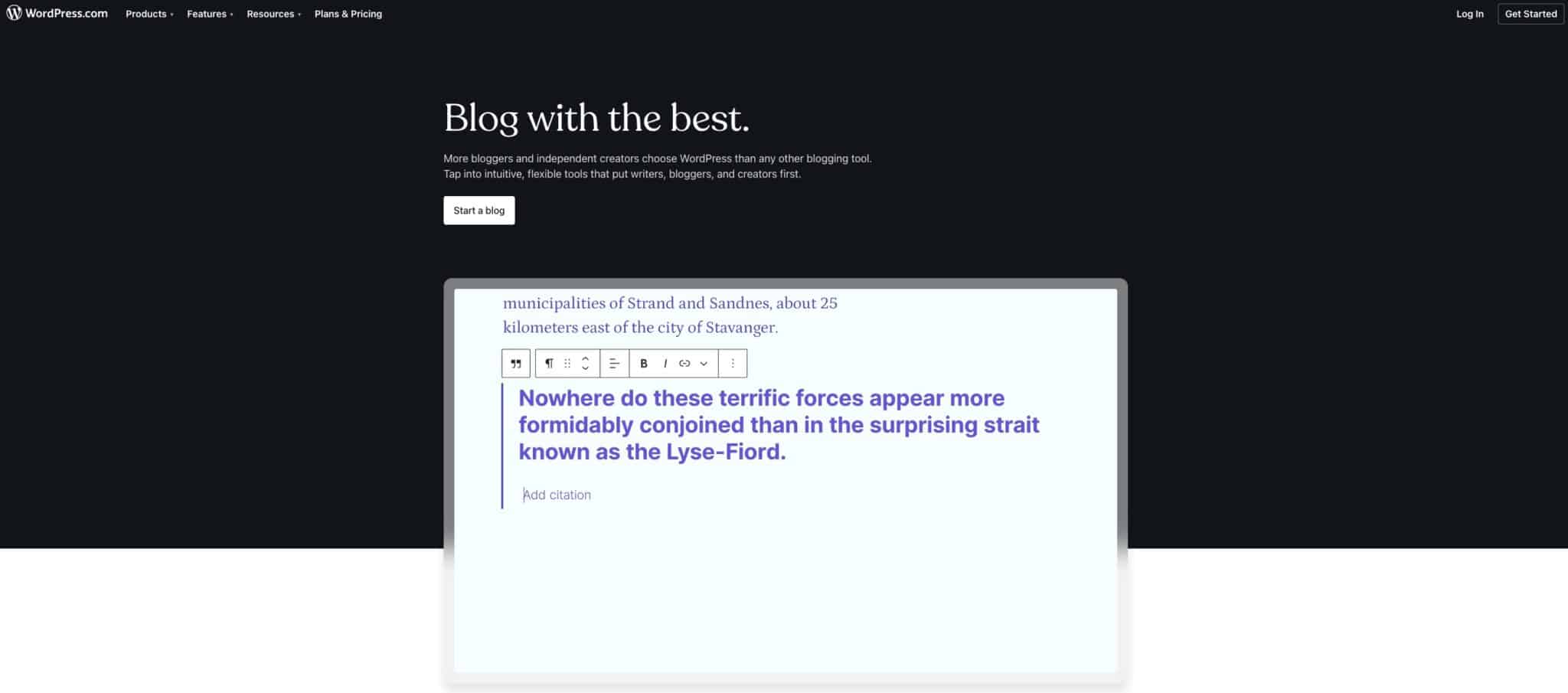
- Best For: Themes and Plugins Blog Software
- Cost: Free, With Premium Options
WordPress.com is a great choice for building websites and blogs without breaking the bank. It has various options, even a free one!
While it began as a blogging tool, it now covers all your website needs, like e-commerce and social features. It’s user-friendly with drag-and-drop tools and looks good on mobile devices.
This is a budget-friendly choice for those who want to be online quickly.
The Pros:
- Started as a blogging tool, now a versatile content system.
- High rating on G2 with tons of reviews.
- Offers many themes and features for blogging.
- You can buy a custom domain and choose from 3,500+ blog themes.
- Add features like social media buttons and forms with plugins.
- Lots of free plugins for endless customization.
The Cons:
- Need to keep themes and plugins updated to avoid problems.
- Maintenance tasks like fixing links and updating software are on you.
- Might be tough for people without tech skills or time to keep up with maintenance.
2. CMS Hub

- Best For: Marketers and Developers
- Cost: Free, With Premium Options
CMS Hub provides everything you need to create and manage stunning website content that’s tailored to individual visitors. Developers can use their preferred tools, supported by a lively developer community. Since HubSpot is cloud-hosted, your IT team doesn’t have to stress over plugin upkeep or downtime.
It gives developers the necessary tools, technologies, and workflows to create a CRM-powered blog. Simultaneously, it offers an excellent user experience for marketers, providing easy access to features that enhance conversion rates.
Moreover, CMS Hub integrates AI capabilities directly into the platform. You can make use of the Free AI Blog Writer to effortlessly generate blog posts.
The Pros:
- Powerful yet user-friendly platform.
- Offers pre-designed themes and customizable options.
- Includes free web hosting and easy domain connection.
- Features HubSpot’s blog editor and built-in SEO tools.
- Allows creation of multi-language variations and A/B testing.
- Provides social media integration for seamless promotion.
- Enables analysis of blog performance within HubSpot’s CRM platform.
The Cons:
- May be overwhelming for beginners.
- Requires time and expertise to fully leverage its capabilities.
3. Wix

- Best For: Beginners
- Cost: $16 to $59 per month
Wix is a website builder – a user-friendly tool that lets you build an online presence with a simple drag-and-drop interface. No coding or FTP knowledge is needed. Just use your email address to start with Wix’s web hosting. You can even create a site for free if you don’t mind a few ads.
It stands out for various reasons, offering online storage, e-commerce tools, video backgrounds, animated titles, mobile apps, and even a useful free service. The Editor X interface is super intuitive, making Wix one of the top choices for building websites.
The Pros:
- Start with over 800 templates suitable for any blogger.
- Use Wix ADI to answer a few questions and get a blog made for you.
- Write and edit posts on desktop or mobile, and add stock photos, videos, or your own media.
- Organize your content into topics.
- Boost your blog’s reach with SEO settings, email tools, and social media sharing.
The Cons:
- Less customizable than other platforms like WordPress.
- Advanced elements like music or maps requires HTML coding.
4. Squarespace
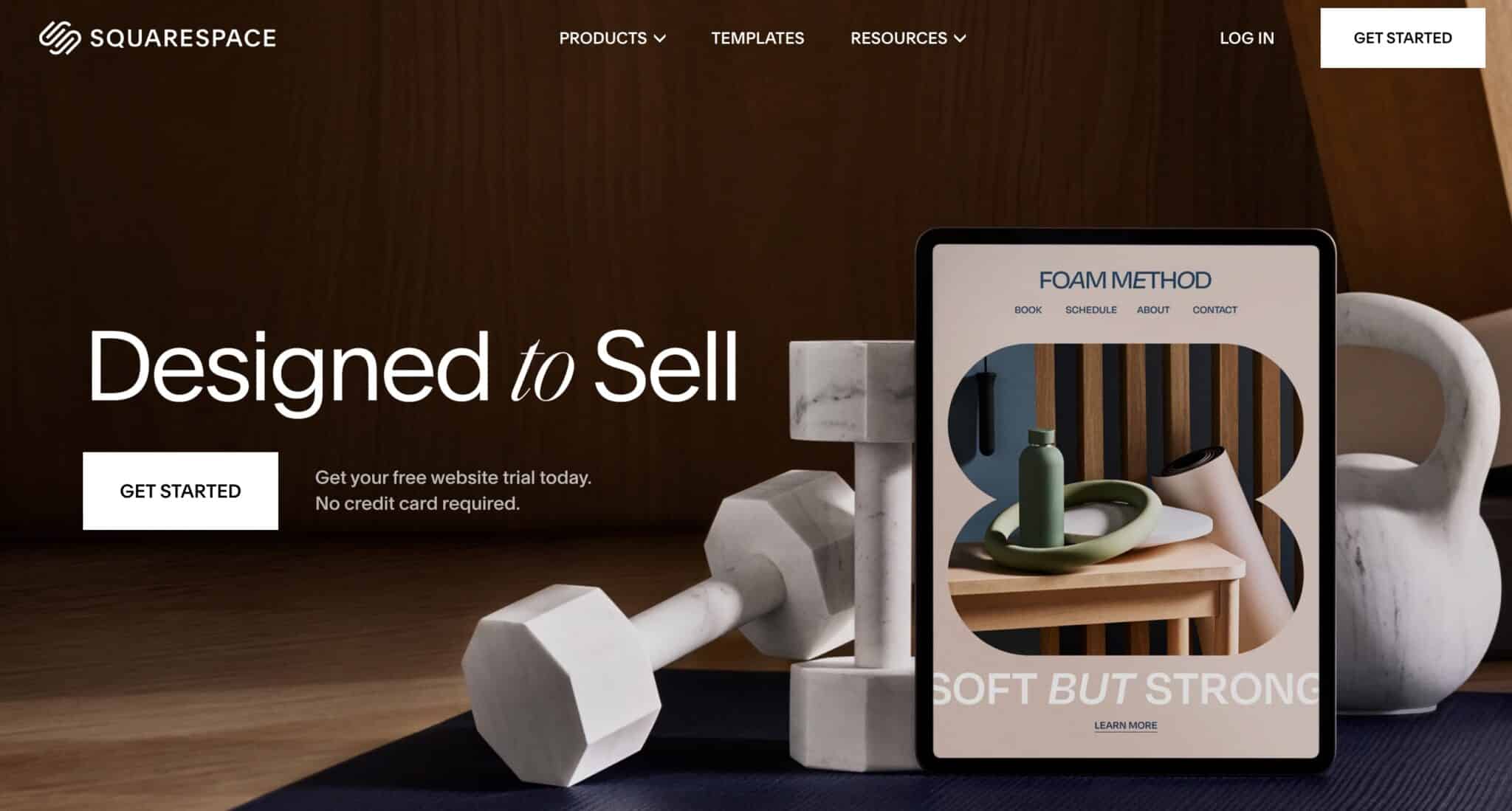
- Best For: Design-oriented bloggers
- Cost: $16 to $65 per month
Squarespace is a big player in the world of Do-It-Yourself (DIY) website builders, allowing you to create your own online space quickly and easily.
It has a high rating of 4.4 on G2. Squarespace provides award-winning designer templates and integrates with Getty Images, Unsplash, and Google AMP, allowing you to make visually appealing and shareable content.
Squarespace doesn’t just stop at website building; it also supports seamless e-commerce integration and community-building services.
What’s more, every Squarespace site comes with handy perks like a free domain registration and a free SSL certificate. It’s your all-in-one solution for a strong online presence!
The Pros:
- Mobile-optimized and fully customizable templates (140 in total).
- Blogging and SEO tools for content creation and optimization.
- Easily connect social media accounts for promotion.
- Built-in analytics to track traffic, visitor behavior, and content interaction.
The Cons:
- Limited functionality due to support for only around 30 extensions.
- Lacks some features like auto-save, making it not suitable for everyone’s needs.
5. Craft CMS
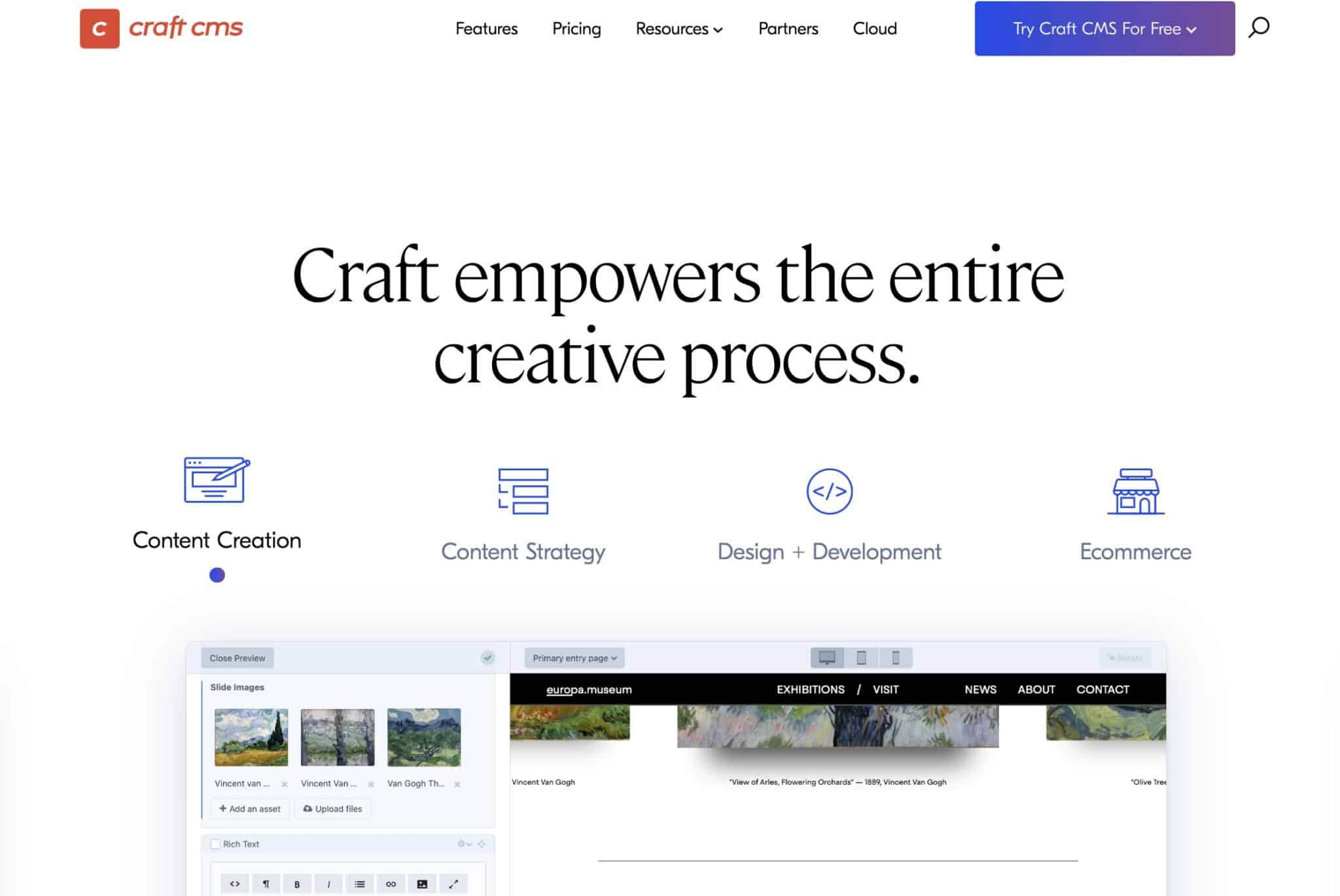
- Best For: Craft CMS is for developers, designers, and web professionals.
- Cost: Free, with premium options available.
Craft CMS is a tool made by Pixel & Tonic for web developers to create stunning websites. Unlike typical website builders, Craft CMS requires you to write your own HTML code, which might be challenging for beginners.
But if you have some coding skills, you can create a website using top-notch coding practices. One of its strong points is collaboration – with Craft Pro, team members can easily access what they need without stepping on each other’s toes.
However, Craft CMS Pro comes with a hefty price tag compared to other options. Despite this, it has earned its place in the CMS industry.
The Pros:
- Options to edit source code.
- Image editor, collaboration tools, and localization feature for translating content.
- Manage multiple blogs from one install.
- Integration with Google Analytics for content performance analysis.
The Cons
- Backend aesthetic may not be appealing.
- Missing some functionalities compared to WordPress.
- May require assistance from website setup person for problem-solving.
- Steep learning curve, especially for beginners in programming.
6. Pixpa

- Best For: Bloggers in creative fields
- Cost: $6 to $25 per month
Pixpa is a website-building platform where you can create websites, e-commerce stores, client galleries, and blogs without needing to know how to code. It’s designed to help creators manage their entire online presence from one easy-to-use platform, saving time and money.
With Pixpa, you get access to over 60 responsive themes for building professional-looking websites. It has a modern and clean interface, making it user-friendly. Photographers can use Pixpa’s integrated Client Galleries feature to share, proof, deliver, and sell their work to clients.
Pixpa comes with a range of built-in tools like an Online Store, Blog, SEO Manager, Marketing Pop-Ups, and Announcement Bar, giving you everything you need to start and grow your online business. Plans start at just $7 per month and include 24/7 support, unlimited bandwidth, and SSL certificates. You can also try it out with a 15-day free trial.
Pros of Pixpa:
- Integrated blogging feature for easy blog creation, management, and optimization.
- Over 150 templates to customize blog layouts, colors, fonts, and more.
- Includes features for content organization, customization, SEO, and social sharing.
- E-commerce integration and 100+ built-in apps for powering up blogs, websites, and online stores.
Cons of Pixpa:
- May not offer as many advanced features as dedicated blogging platforms like WordPress.
- No built-in traffic analytics, you’ll need tools like Google Analytics to measure traffic.
7. Joomla
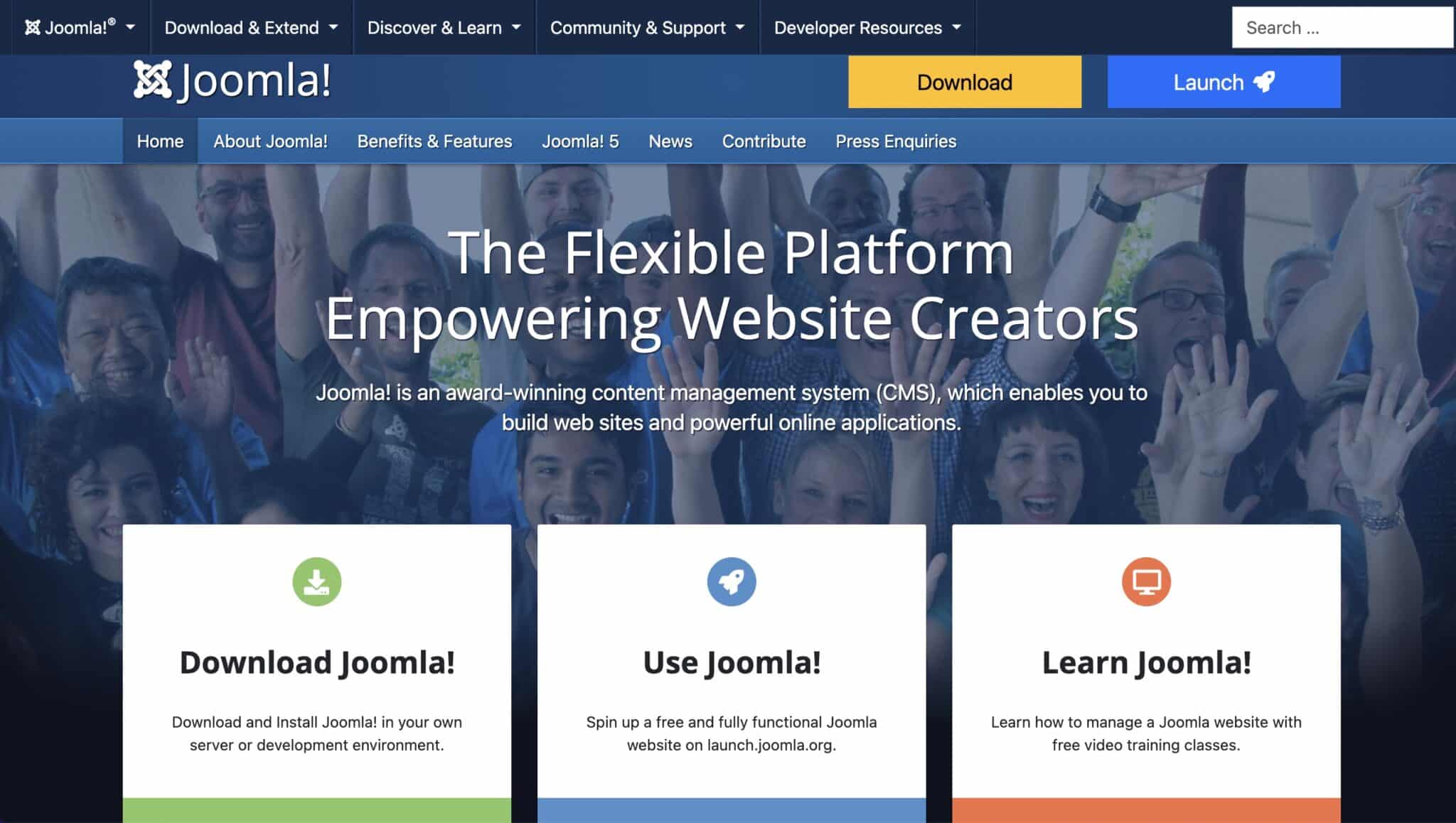
- Best For: Community Building
- Cost: Paid, Plans range from $8 to $33 per month
Joomla is an open-source CMS (Content Management System) designed for building community-centric blogs. It’s made with PHP and uses a MySQL database to store website stuff and settings.
With Joomla, you get a simple interface to make, change, and arrange content, handle users, control permissions, and tweak how your website looks. It’s also easy to add extra features using extensions and plugins.
Lots of different websites use Joomla because it’s open-source, meaning you can change and share its source code without any cost.
The Pros
- Rich built-in functionality and thousands of extensions available.
- Allows creation of custom post types and efficient management of users.
- Supports publishing content in multiple languages from the start.
- Extensions like EasyBlog by StackIdeas enhance blogging experience with a cleaner editor, star ratings, and social media post automation.
- Joomla’s G2 rating is 4/5.
The Cons
- Has a steeper learning curve compared to some other CMS due to its robust features.
- Offers a smaller selection of themes and extensions, limiting customization options.
8. Contently
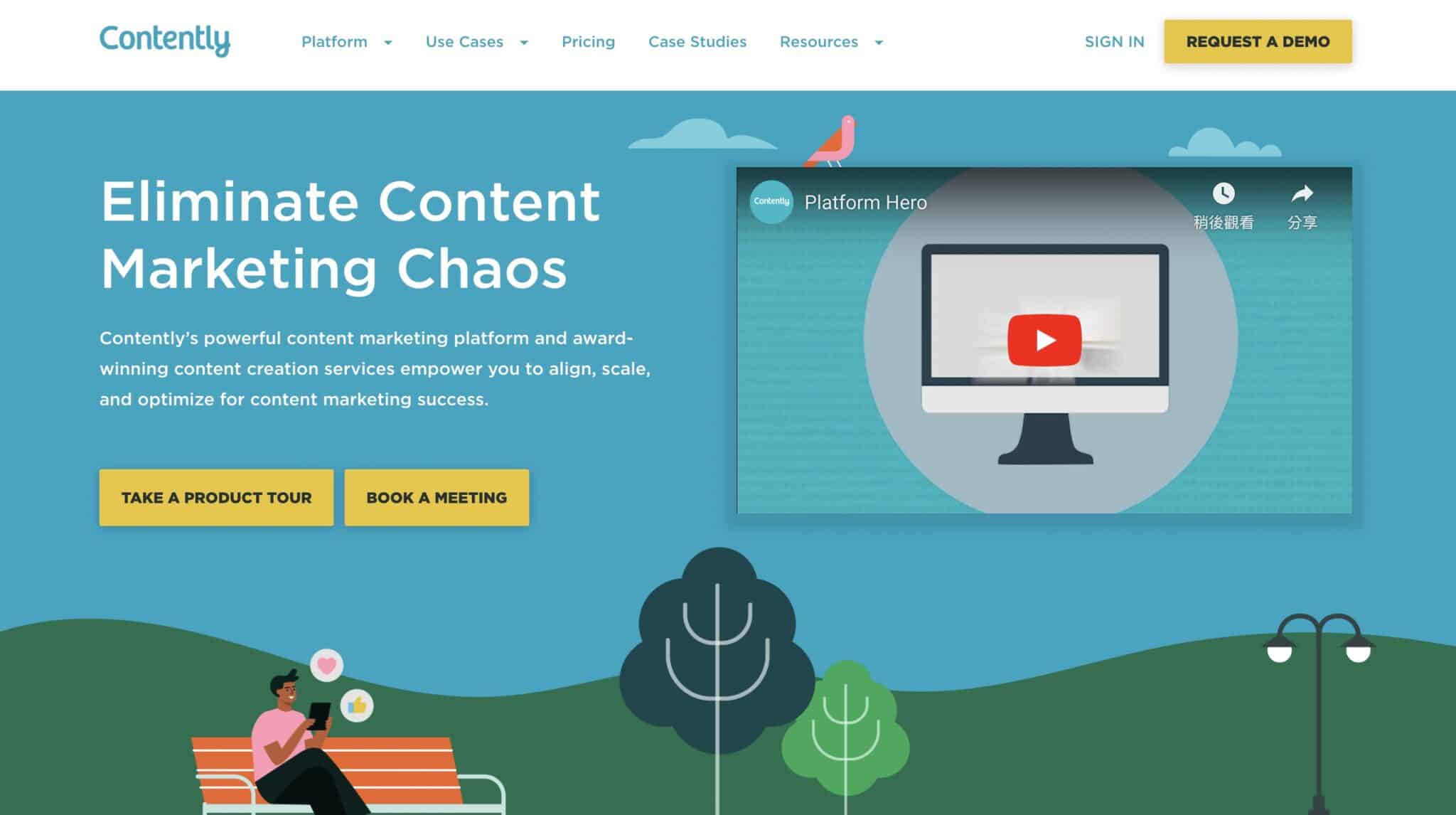
- Best For: Enterprises Blog
- Cost: Quote-Based Pricing
Contently is a platform for content marketing that helps users craft unique brand stories and reach new audiences. It offers tools for creating content roadmaps and assigning top-notch editors to achieve desired results in attracting customers.
With access to over 55,000 professional freelance writers, users can explore and execute a variety of editorial ideas. Contently streamlines the editorial process through calendars, editorial assets, and customized approval workflows.
Contently’s main goal is to assist users in publishing original content on social media platforms. It also tracks daily engagement metrics to understand audience response.
The Pros
- Manage your entire content creation process in one place.
- Create and visualize your editorial strategy with a customizable production calendar.
- Organize blog posts using their tagging tool.
- Collaborate effectively with your team using advanced workflow tools.
- Pay for Contently’s experienced freelancers to write content for you.
- Smart content review tools ensure your content aligns with your brand, is optimized for search, and complies with legal standards.
- Compare your content’s performance against industry benchmarks and measure ROI directly on your dashboard.
The Cons
- Quote-based pricing varies for each client and includes editing, strategy, content creation assistance, and visual assets.
- Not ideal for small businesses or individual bloggers on a budget.
9. Drupal
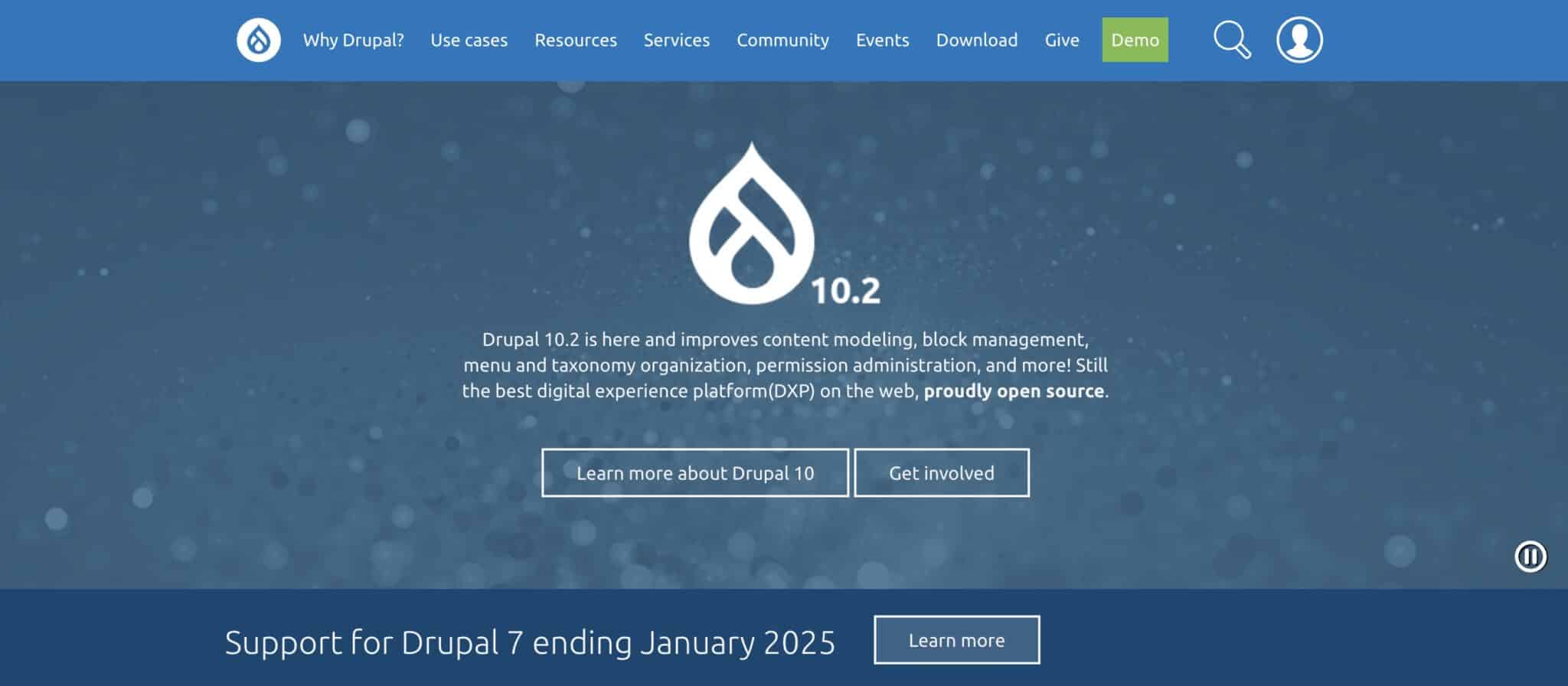
- Best For: Advanced Bloggers
- Cost: Free, Open-Source Software
Drupal is a free and open-source content management system (CMS) written in PHP. It competes with Joomla and Plone. The main part of Drupal, known as Drupal core, has basic features you find in most CMS, like a dashboard, menu management, RSS feeds, customizable page layouts, and themes. It also has tools for system administration.
Drupal includes features like access statistics, advanced search options, caching for better performance, user control with privileges, access restrictions, and workflow tools.
It also has descriptive URLs for better navigation. What makes Drupal versatile is its over 30,000 addons or modules that can add extra functions to the system.
The Pros:
- Loads of features and modules right from the start.
- If you know how to use them, or can learn, Drupal gives more power compared to other free platforms.
- Supports various content types, page templates, blocks, etc., making content creation and management flexible.
- Advanced user permissions, allowing personalized access for different roles like admins and content editors.
- Multilingual capabilities, Layout Builder, and other modules for handling large, complex blogs.
The Cons:
- If you don’t know how to use the features and modules, or don’t have time to learn, it can be confusing.
- Might be better to choose a simpler platform if you’re not into the advanced features of Drupal.
10. Hostinger Website Builder
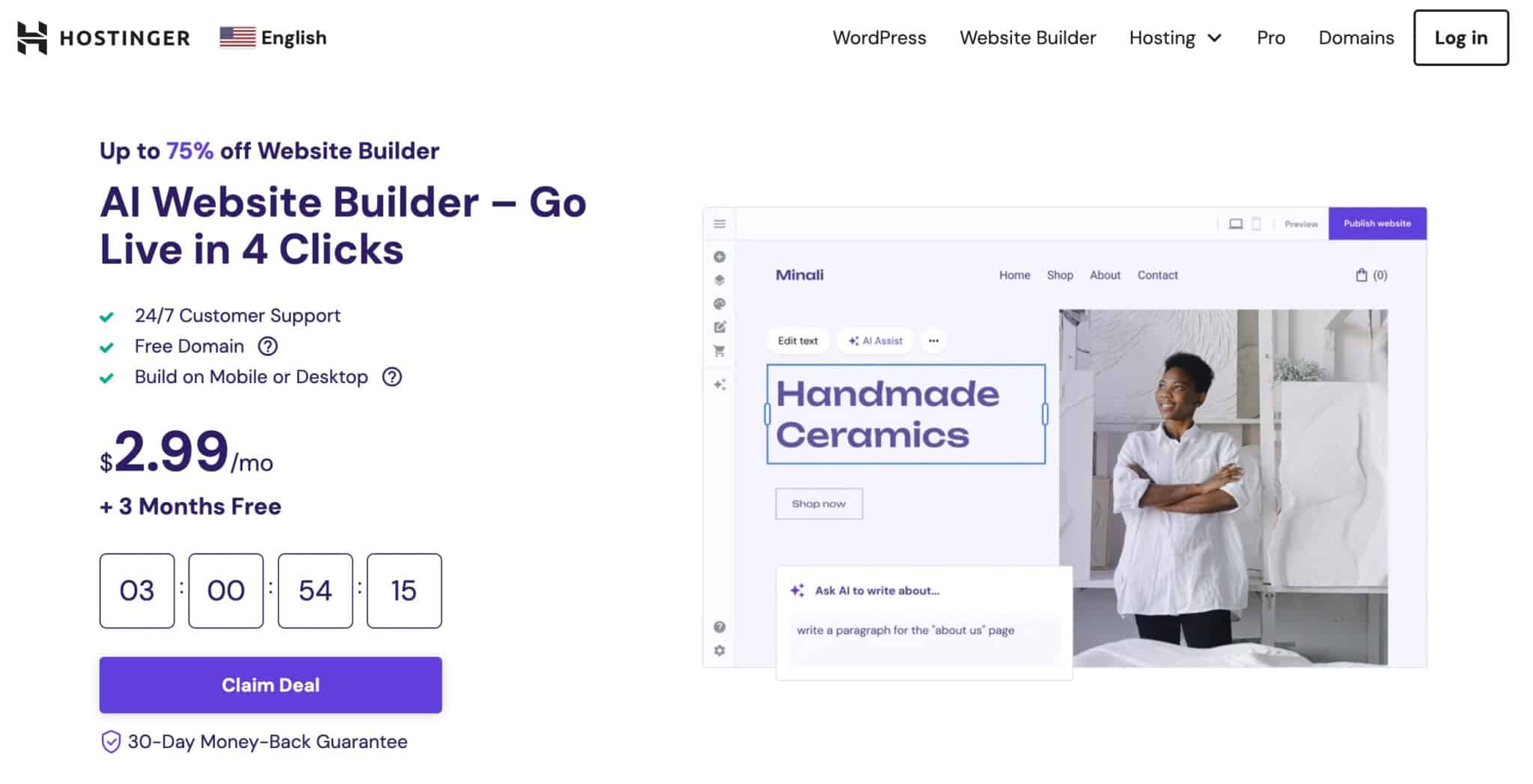
- Best For: AI-Powered Website Creation
- Cost: Paid, Starting at $2.49 per Month
If you’re short on time or don’t want the hassle of building a website from scratch, Hostinger Website Builder (formerly Zyro) has got you covered. It’s perfect for creating personal or small business sites with ease.
This builder not only helps you design appealing web pages and e-commerce shops but also stands out with features like a copy generator and logo-building tool, eliminating the need for professional help.
Pros:
- Easy to use and navigate.
- Can create a website quickly by asking you a few questions.
- Offers 20 blog-related templates to choose from.
- Includes built-in SEO and eCommerce features, reducing the need for additional plugins.
- Can easily upgrade hosting plans as your blog grows.
Cons:
- No blog search functionality.
- Can’t switch templates once your site is live.
11. Write.as

- Best For: People who value privacy
- Cost: Free, with premium options available
Write.as is a straightforward blogging platform designed for quick publishing of your writing. It has a clean and distraction-free editor. Behind this, there’s a powerful API that allows you to build your own tools on the platform.
You can use Write.as as a headless CMS, making it versatile for creating different types of content. Whether you want to write short blog posts or detailed reports, you can do it anonymously or set up a profile.
The Pros
- A basic editor with just an auto-save feature, making it feel like writing in a virtual journal.
- Free to use and doesn’t have annoying ads.
- Teams can use it like Google Docs to share updates, proposals, and works-in-progress with a monthly subscription.
The Cons
- Need to use Markdown, a syntax with special characters for formatting (e.g., asterisks for bullet points, hashtags for headers, [Link] for adding a link).
- The basic subscription tier lacks the option to use custom CSS.
- The default option doesn’t allow picture uploads; this feature is reserved for the Pro version.
12. LinkedIn
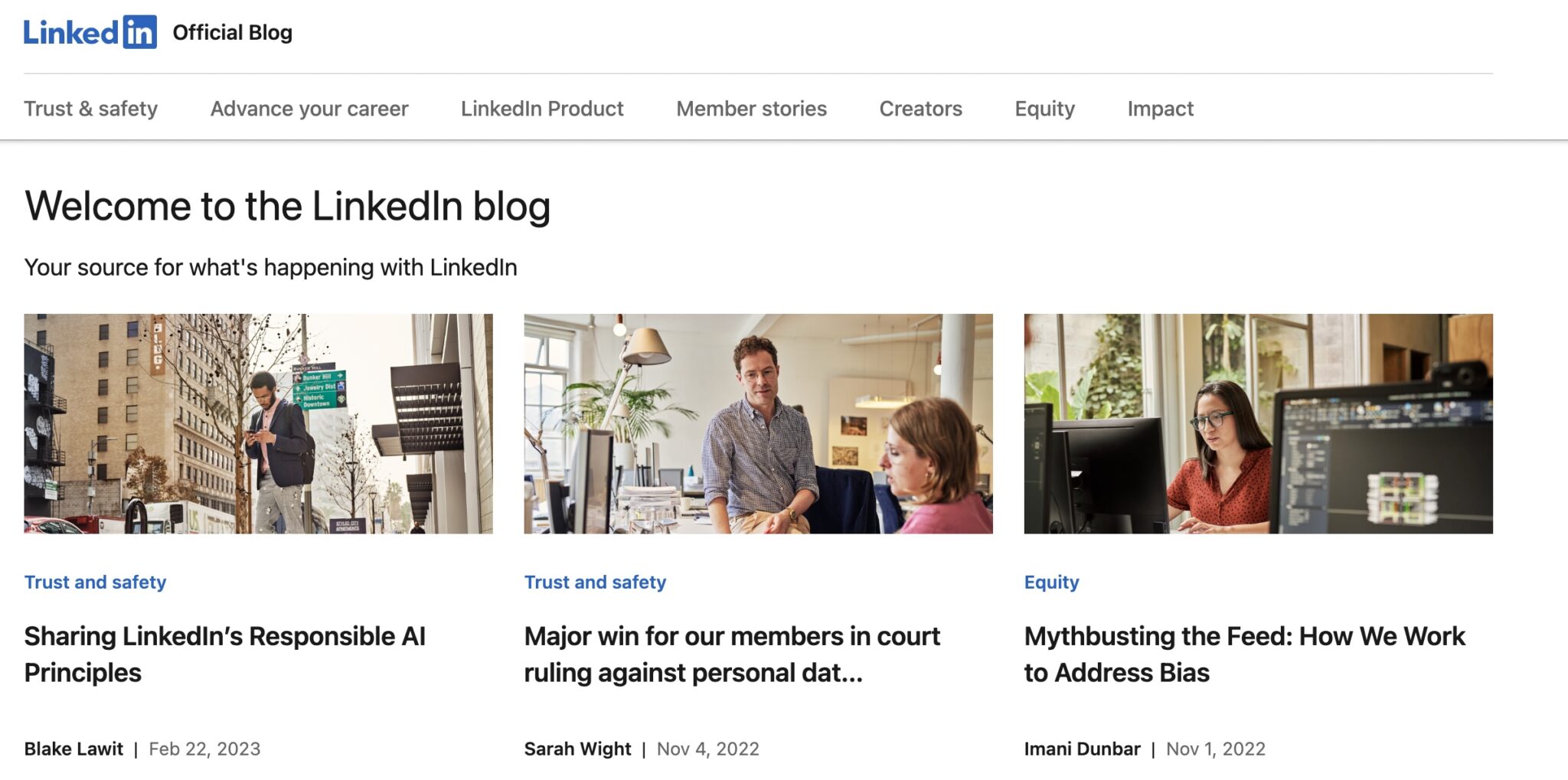
- Best For: Thought Leadership
- Cost: Free
LinkedIn is great for anyone who wants to share blog posts directly with a large audience. With 875 million people on the platform, it’s a powerful way to get your content seen and drive traffic to your site.
The best part? It’s completely free! No need to buy a domain, pay for ads, or any extra costs. Just sign up, share content, and make connections to boost your visibility without spending a dime.
Pros:
- Perfect for building brand awareness and driving traffic to your website.
- Can help you establish yourself or your company as a thought leader in your industry.
- Large user base can spark conversations about your content.
- Can create specialized content tailored to specific user groups.
Cons:
- Can’t get the SEO benefits of hosting your blog on your own site.
- Without optimization, your content may only reach your existing connections.
- Hard to collect new contacts for your newsletter.
13. Medium
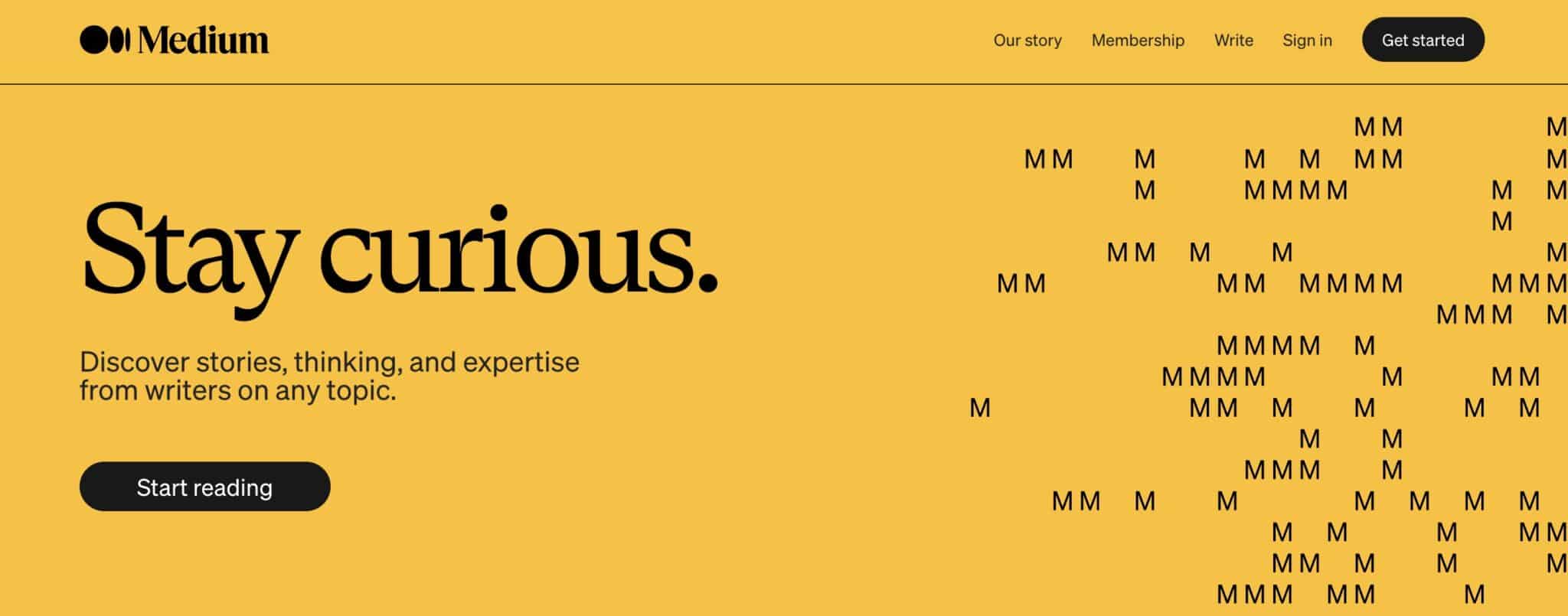
- Best For: Writers
- Cost: Free, with Premium options
Medium is a well-known, free blogging platform that brings together both amateur and well-known writers from major media publications. Medium hosts a mix of amateur and established writers, creating a dynamic writing community.
Writers on Medium can earn through the platform’s Partner Program, which pays based on the total time readers spend on their articles. It’s a hit among bloggers because it’s free for writers and doesn’t demand any web design or technical skills.
Medium automatically formats posts, providing a visually appealing look without the need for additional effort.
The Pros
- Easy to use and publish content.
- Large readership with a recommendation engine to attract new audiences quickly.
- Community publications allow users to create up to seven publications and submit blogs to gain a wider audience.
- Medium publications, like Towards Data Science with over 645,000 followers, can boost attention to new blogs.
- Can complement a website blog, and some businesses republish their onsite blog content here.
The Cons
- Doesn’t offer SEO benefits like an onsite blog.
- Community may favor trends or long-time members, making it harder for newcomers to gain attention.
- Can present duplicate content risks if not set up properly with your website.
14. Blogger

- Best For: Lifestyle Bloggers
- Cost: Free
Blogger is a smart choice for those starting a new blog with low risk, as it doesn’t require any financial investment. Unlike other services like WordPress that make you pay, Blogger is a free platform that allows you to kickstart your content creation without spending money. You get many of the essential blog features without the upfront cost.
This platform is especially beginner-friendly, making it easy to navigate if you’re new to blogging. It provides helpful resources and features for efficient blogging, supporting your business goals.
Finding a free blogging platform that lets you make money can be challenging, but Blogger stands out. It allows you to benefit from Google AdSense and Google Analytics, giving you insights into your blog’s performance with your audience.
The Pros
- Easy to create and customize a basic blog.
- Quick start with a Google account, template selection, and publishing.
- Options to buy a custom domain, optimize SEO, connect to Google Analytics, use Adsense, and edit HTML/CSS.
The Cons
- Limited content management features.
- Can’t install plugins for added functionality.
- No support for different content types like portfolio pages.
- Default content display is in reverse-chronological order, and you can’t change it easily.
15. Tumblr

- Best For: Multimedia
- Cost: Free
Tumblr is a blogging platform, relatively younger than WordPress. It started in 2007 and gained momentum when Yahoo acquired it in 2013. Later, in 2017, Verizon took charge after buying Yahoo.
Tumblr prides itself on being the easiest way to publish content quickly. It fosters instant connections among users, creating a vibrant community. With over 300 million blogs, Tumblr’s community is thriving.
It’s easy to publish a post on Tumblr – just a few clicks on the top strip, and you’re done. Whether it’s photos, videos, or more, it’s quick and straightforward.
The center column neatly displays content from blogs you follow, mixed with some helpful suggestions. Everything you need is right there, avoiding unnecessary clicks.
Pros:
- Combines blogging and social networking in a visually appealing platform.
- Offers a variety of free and premium themes, customizable pages, sidebars, social sharing buttons, comment sections, and the option to use a custom domain.
- Supports various multimedia post types, including photos, GIFs, links, chat dialogue, audio files, and videos for engaging and shareable content.
- Users can easily like, reply, and reblog posts, fostering an online community.
Cons:
- Limits on scheduling posts (50/day) may hinder long-term content planning. Video uploads are capped at 500MB, and tracking is limited to 20 tags at a time.
- Violating Tumblr’s guidelines can lead to the suspension of your site at any time.
Final Words
To wrap things up, once you know what you want to achieve with your blog and understand your requirements, you can pick the right blogging platform. By focusing a bit, you’ll discover a tool that has the features and flexibility you need.
When making this decision, consider your budget, technical skills, long-term goals, and the type of blog you want. Also, don’t forget about the less obvious features that will become important as your blog grows.
Ultimately, the chosen platform should be user-friendly and powerful to support your business. So, make your decision and begin blogging to enjoy the benefits of improved SEO and increased traffic.
If you need more guidance, sign up for my online business coaching.

Jeff Smith, Founder of High Income Source, is an online business coach with a BBA in Marketing and Entrepreneurship from the University of Pennsylvania. His online business coaching program is so popular that more than 100 students have benefited and started successful online businesses under his guidance.
Jeff started dabbling in online business while he was in college, where he began with dropshipping. After college, Jeff worked at a marketing agency and freelanced as a writer. His breakthrough came when he realized the potential of blogging, leading to a $100,000 sale of a dog-focused website. His expertise includes SEO, affiliate marketing, Amazon FBA, blogging and dropshipping.